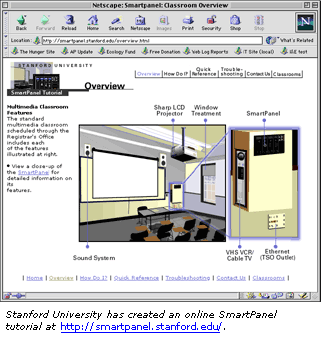 | |
 |
Classrooms Receive Facelift this Summer By Mary Sue Hedrick The Classroom Development Project also covers facility improvements including carpeting, upgraded chalkboards with multiple sliding panels, new paint and acoustical treatment, and new furniture for both the students and the instructors. Over the summer, approximately 30 classrooms are slated for these improvements. Funding for this project comes from a general funds budget for classroom support, administered by the Office of the Registrar. In February 1998, the ISAG made the following recommendations for general assignment classroom improvements:
The ISAG recommendations have resulted in plans for new carpeting and seating, efficient tabletop podiums, chalkboard units with sliding panels, painting, and renovating the classrooms to comply with fire codes and with criteria specified in the Americans with Disabilities Act (ADA). Some of these improvements have already been made in Wellman Hall. Olson Hall will be the first to receive such upgrades this summer, and others will follow as funding permits. "One issue we are faced with is the inevitable reduction of seating capacity as we make the rooms ADA and fire-code compliant," says Farrell, who took over management of the Classroom Development Project in July 1999. "This loss of capacity makes the future need for more classrooms even more pressing, especially with the expected increases in enrollment in the coming years." A Long Range Development Plan Space Advisory Group, chaired by Richard Keller in Planning and Budget, has been formed to deal with classroom capacity issues, among others, in the face of Tidal Wave II. In response to the recommendation for improved technology in the classrooms, the ISAG designated the SmartPanel as UC Davis's classroom standard and in fall 1999 approved installation in all 120 general-assignment classrooms. Farrell directed the development of the SmartPanel technology while at Stanford University.

Project Manager Teri McKown, IT-project specialist, expects the SmartPanels to be installed in all general-assignment classrooms by fall 2001. "The key to the success of the SmartPanel is that users are properly trained. To that end, the Office of the Registrar, the Division of Information Technology (IT), and the Teaching Resources Center are working together to provide faculty training for the SmartPanel." For an online tutorial, visit Stanford University's site at http://smartpanel.stanford.edu/. 
|